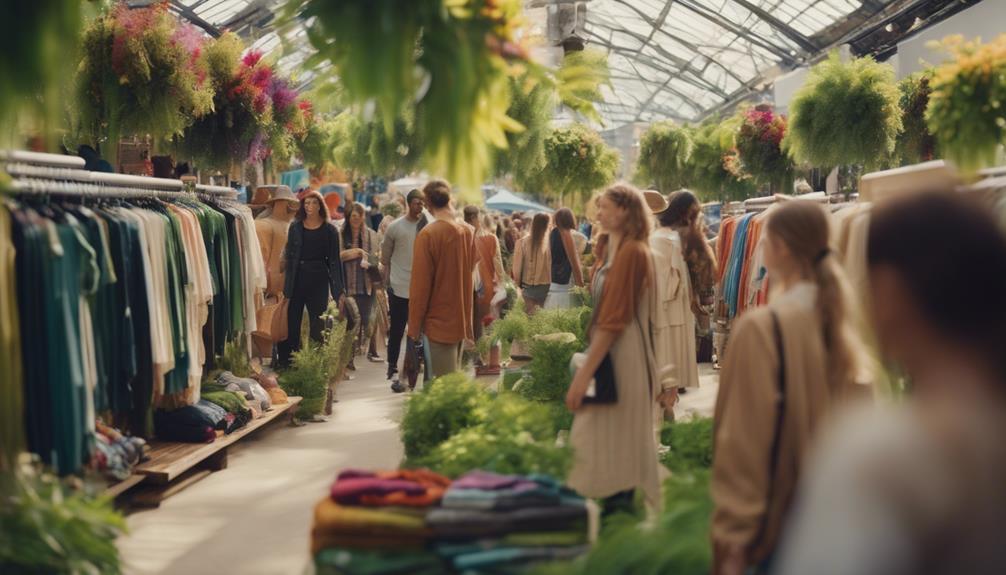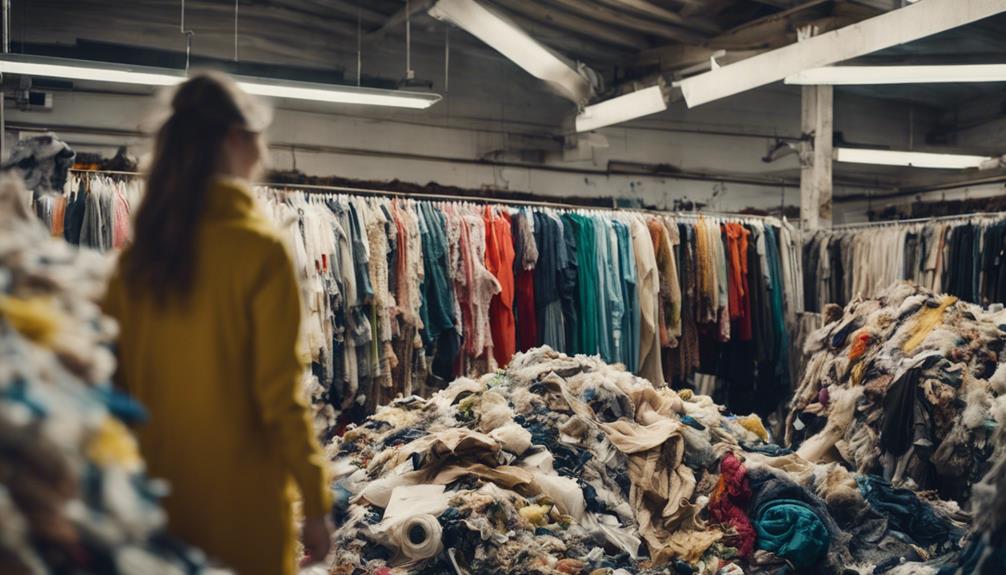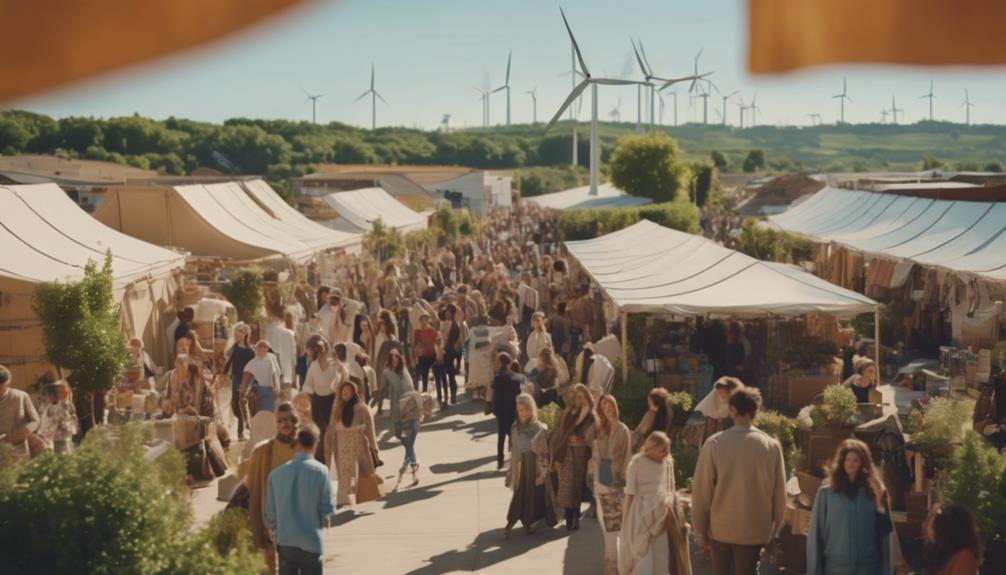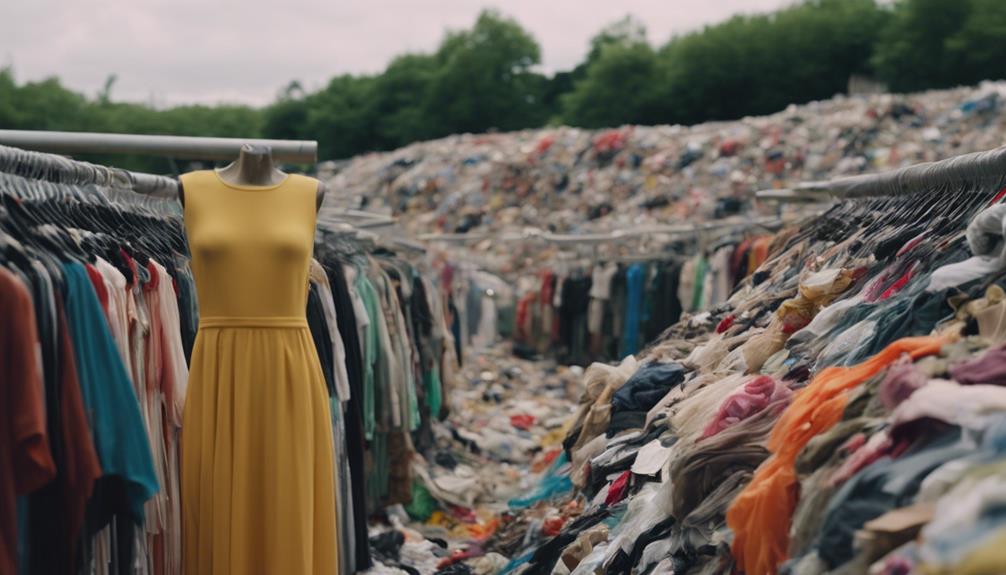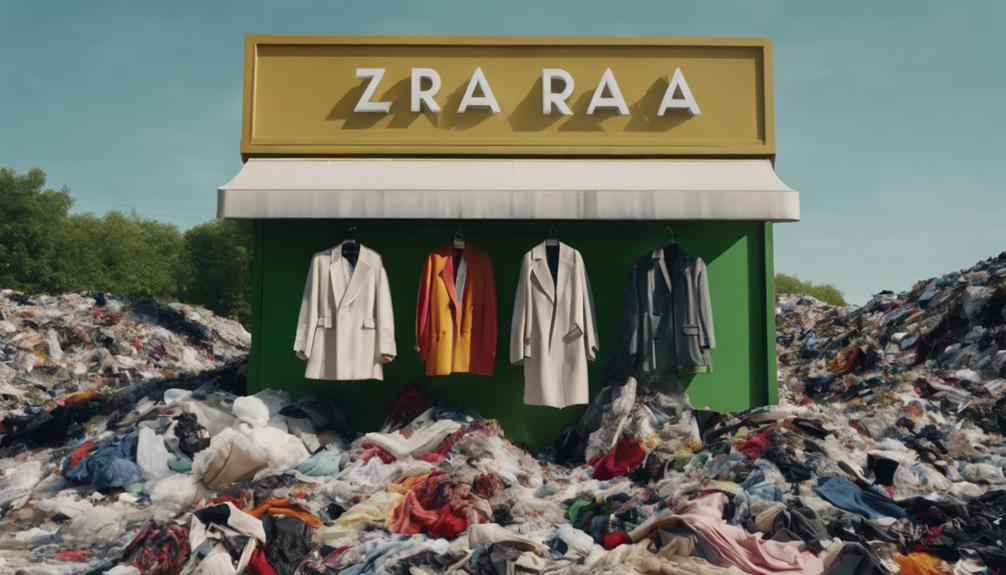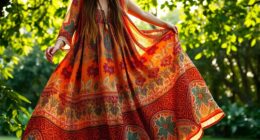Absolutely, sustainable fashion is on the rise! The market is already valued at over $6.5 billion and is projected to hit $10.1 billion by 2025. By 2030, you can expect it to grow even further, reaching around $15 billion. Millennials and Gen Z are leading this change, with a significant percentage prioritizing sustainability in their purchases. Plus, innovations like eco-friendly materials and resale platforms are driving demand. As the industry embraces sustainability, it’s also creating millions of jobs and boosting the economy. Stay tuned to discover more incredible shifts happening in sustainable fashion!
Key Takeaways
- The sustainable fashion market is projected to grow from over $6.5 billion to $15 billion by 2030, reflecting significant growth potential.
- Millennials and Gen Z drive this trend, with 78% of U.S. consumers prioritizing a sustainable lifestyle.
- The ethical fashion market is growing at an average annual rate of 8.3%, indicating strong consumer demand for sustainable options.
- Innovations like mycelium-based leather and second-hand marketplaces are contributing to the sustainable fashion industry's expansion.
Sustainable Fashion Industry Overview
The sustainable fashion industry is rapidly expanding, currently valued at over $6.5 billion and expected to reach $10.1 billion by 2025. This growth signifies a sustainable fashion revolution, as more consumers prioritize eco-friendly choices.
You're not alone in this shift; the ethical fashion market is thriving, with an average annual growth rate of 8.3%, projected to hit 9.7% by 2030.
As you shop, you'll notice that sustainable products are growing 5.6 times faster than their non-sustainable counterparts, presenting you with more options than ever. The eco-friendly clothing segment alone is set to increase by $1.57 billion by 2025, showcasing the rising demand for sustainable fashion.
Innovations in sustainable materials are at the forefront of this transformation. Brands are focusing on reducing carbon emissions and utilizing organic materials, ensuring the clothes you buy have a lower environmental impact.
Growth Rate and Market Dynamics

The sustainable fashion market's rapid growth is hard to ignore, with projections showing it could reach $15 billion by 2030.
You're likely to notice that regions like Asia Pacific and Europe are leading the charge, each contributing to the industry's dynamics in unique ways.
As consumer demand for ethical options rises, understanding these growth rates and regional influences becomes essential for anyone interested in sustainable fashion.
Annual Growth Projections
Sustainable fashion's impressive trajectory shows a current market value exceeding $6.5 billion, with projections estimating growth to $10.1 billion by 2025 and potentially reaching $15 billion by 2030. This growth reflects a strong annual growth rate of 8.3%, which is expected to rise to 9.7% by 2030. Such numbers indicate a robust demand for sustainable options as consumers increasingly prioritize ethical choices in their purchasing decisions.
You'll notice that sustainable products are anticipated to grow 5.6 times faster than their non-sustainable counterparts, highlighting a significant shift in consumer preferences. The eco-friendly clothing segment alone is projected to expand by an additional $1.57 billion by 2025, showcasing strong profitability prospects within the sustainable fashion sector.
As you consider these figures, it's clear that the sustainable fashion market isn't just a passing trend; it's a burgeoning industry that's reshaping the landscape of fashion retail. With consumers becoming more conscious of their impact on the environment, the upward trajectory of sustainable fashion is set to continue, driving innovation and growth in the years to come. As more and more fashion brands and retailers embrace sustainable practices, the sustainable fashion popularity has only increased. This shift towards ethical and eco-friendly fashion is not only changing consumer behavior but also influencing the entire fashion industry, from production to marketing. With the rising demand for sustainable fashion options, it’s likely that we’ll see even more investment and collaboration in this space in the near future.
Regional Market Leadership
Asia Pacific dominates the global ethical fashion market, capturing 36% of its value and driving significant growth in the sector. This region's influence is essential, as it reflects the rising consumer demand for sustainable fashion.
Here are some key insights into market dynamics:
- Growth Rate: The ethical fashion market is projected to grow at an average annual rate of 8.3%, potentially reaching 9.7% by 2030.
- Leadership in Innovation: Europe leads in sustainable fashion adoption, contributing to a higher market share through innovative eco-friendly practices.
- North America's Shift: The region's increasing consumer demand for sustainable options is significantly boosting the sustainable fashion industry.
- Market Expansion: Sustainable products are expected to expand 5.6 times faster than non-sustainable alternatives, indicating a substantial shift in consumer preferences.
As you can see, regional market leadership plays an important role in shaping the ethical fashion market. Each area brings unique strengths and drives growth, ensuring that sustainable fashion continues to flourish across the globe.
Keep an eye on these dynamics; they're reshaping the industry's future!
Economic Impact of Sustainable Fashion
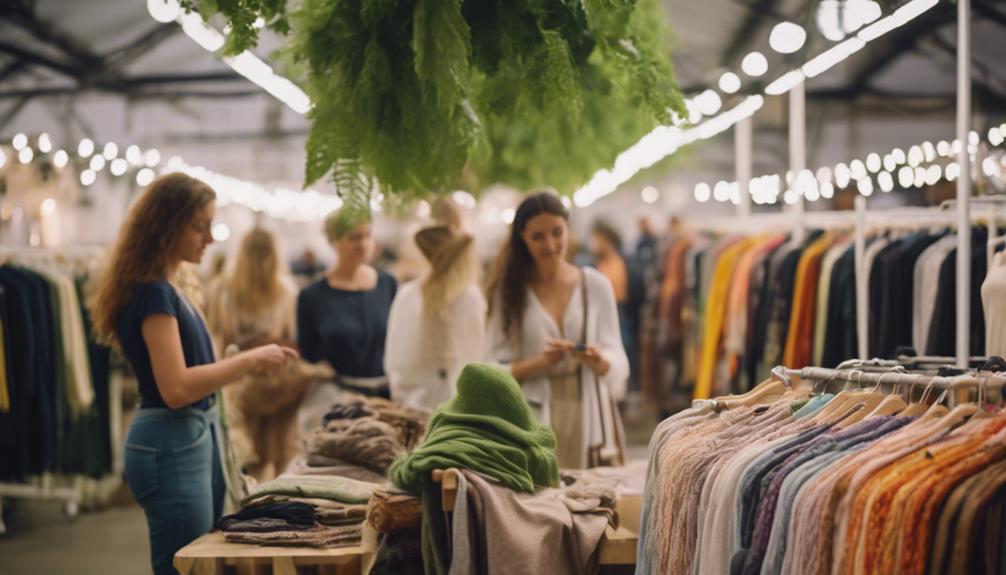
As you explore the economic impact of sustainable fashion, you'll see how it's not just about eco-friendly practices.
The market's projected growth and job creation opportunities highlight its profitability and potential for significant economic change.
Understanding these dynamics can help you appreciate the financial benefits of embracing sustainability in the fashion industry.
Job Creation Opportunities
The shift toward eco-friendly textiles is set to create millions of jobs, highlighting the significant economic impact of adopting sustainable fashion practices. By embracing sustainable fashion, you're not just making a stylish choice; you're also contributing to substantial job creation and economic opportunities.
Here are some key facts to take into account:
- The change to sustainable textiles is projected to create approximately 18 million jobs by 2030.
- The eco-friendly clothing segment is expected to increase by $1.57 billion by 2025, further boosting job creation efforts.
- Circular business models in the fashion industry could generate around $560 billion in economic opportunities, showcasing the financial benefits of sustainable practices.
- Innovations in sustainable materials are driving the demand for skilled labor, enhancing job prospects in the textile and fashion sectors.
You can see how the growth of sustainable fashion directly correlates with job creation. As the industry evolves, new roles and opportunities arise, ensuring that both the economy and the planet benefit from this transformative change.
Embracing sustainability isn't just good for the environment; it's good for the economy too!
Market Growth Projections
Sustainable fashion is set to experience remarkable growth, with projections estimating the market will surge from over $6.5 billion to $10.1 billion by 2025. This growth represents a significant economic opportunity for businesses and consumers alike.
The ethical fashion market is expected to achieve an impressive annual growth rate of 8.3%, potentially increasing to 9.7% by 2030. Meanwhile, the eco-friendly clothing segment is projected to rise by $1.57 billion by 2025, highlighting the rising demand for sustainable options.
The organic fashion sector is also making waves, with a compound annual growth rate (CAGR) of 16.2%. As consumers become more aware of the environmental impact of fast fashion, these market growth projections indicate a change toward more responsible purchasing behaviors.
Shifting to sustainable textiles could create approximately 18 million jobs by 2030, further solidifying the economic impact of this movement. Additionally, addressing fast fashion's issues could boost the global economy by an astounding $192 billion.
Sustainable Practices Profitability
With sustainable fashion on the rise, businesses are discovering that adopting eco-friendly practices not only benefits the environment but also enhances profitability. By integrating sustainable practices, you're tapping into a dynamic market that offers significant economic opportunities.
Here are some compelling reasons to reflect on:
- Consumer Demand: The eco-friendly clothing segment is expected to grow by $1.57 billion by 2025, highlighting the shift in consumer preferences towards sustainable options.
- Job Creation: Shifting to sustainable textiles could create up to 18 million jobs by 2030, showcasing the industry's potential for employment growth.
- Textile Recycling Market: Valued at roughly $4.1 billion in 2022, this market is projected to grow to $5.3 billion by 2030, indicating strong economic opportunities in recycling practices.
- Circular Business Models: These models could generate an astonishing $560 billion in economic opportunities, illustrating profitability that far exceeds traditional practices.
Incorporating sustainable practices not only aligns your brand with consumer values but also positions you for impressive financial success in the evolving fashion landscape.
Consumer Demographics and Trends

Millennials and Gen Z are driving the sustainable fashion movement, making up a significant portion of consumers who prioritize ethical and eco-friendly purchasing habits. With Millennials constituting over 40% of sustainable fashion consumers, their preference for ethical purchasing is reshaping the market. In fact, 78% of U.S. consumers now prioritize a sustainable lifestyle, indicating a clear shift towards eco-conscious decisions in fashion.
When you look at online shopping, it's even more pronounced: Gen Z and Millennials account for 69% of online sustainable product purchases. In the UK, 71% of Gen Z females see sustainability as a critical purchasing factor, highlighting how important eco-friendly options are for younger demographics.
However, it's important to note that 88% of consumers express skepticism about sustainability claims in fashion. This skepticism underscores the need for transparency and genuine practices from brands.
As these consumer demographics continue to evolve, the demand for sustainable fashion will likely grow even stronger, pushing brands to adapt and meet the expectations of a more conscious consumer base. Embracing this change is essential for both consumers and brands alike.
Environmental Impact of Fast Fashion
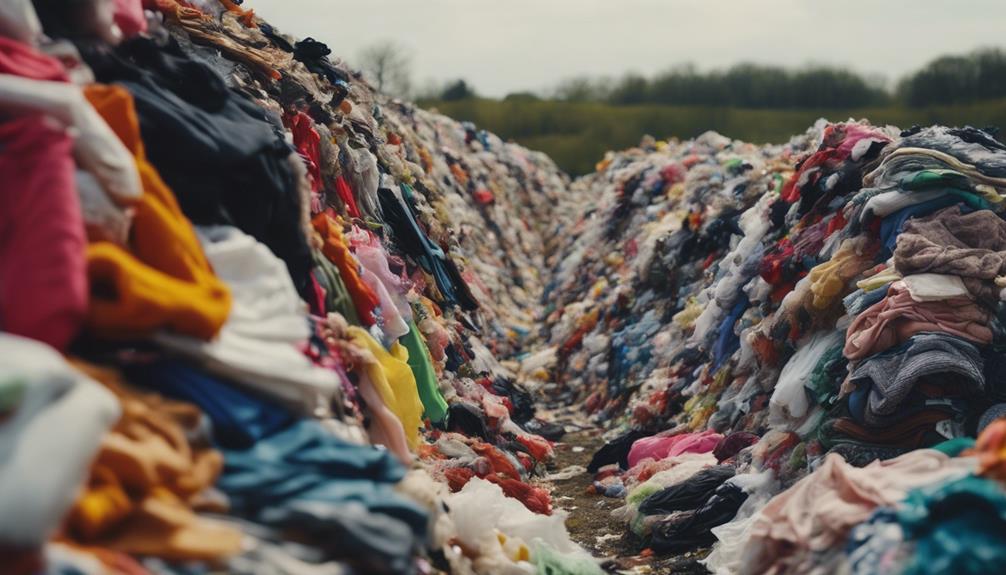
Fast fashion's devastating environmental impact is evident in its significant contributions to carbon emissions and waste generation. You might be surprised to learn that the fast fashion industry is responsible for 8-10% of global carbon emissions, making it the second-largest polluter after oil. This alarming statistic is just the tip of the iceberg when it comes to the environmental damage caused by this industry.
Here are some key facts to contemplate:
- Fast fashion contributes nearly 20% of global wastewater, severely impacting water resources and ecosystems.
- An estimated 92 million tons of textile waste are generated annually, with the average American discarding over 80 pounds of clothing each year.
- Each year, around 100-150 billion new clothing items are produced, leading to excessive waste and environmental degradation.
- The average lifespan of clothing has decreased by 36% from 2000 to 2015, with garments now typically worn only 7-10 times before disposal.
These figures highlight the urgent need to rethink our consumption habits.
The environmental impact of fast fashion is unsustainable, and it's time to advocate for change.
Waste Generation in the Fashion Industry

The staggering amount of waste generated by the fashion industry poses a serious threat to our environment and underscores the urgent need for sustainable practices. Each year, the industry produces over 92 million tons of textile waste, a figure that highlights the immense burden on landfills worldwide.
You might be surprised to learn that the average American discards around 80 pounds of clothing annually, a direct result of the fast fashion culture that encourages frequent purchases and rapid disposal.
Fast fashion's production cycle is alarming; many garments are worn only 7 to 10 times before they're tossed aside. With only 1% of used clothing recycled into new garments, the majority ends up in landfills or incinerators.
This not only wastes valuable resources but also contributes to unnecessary greenhouse gas emissions from burning or improper disposal of returned goods.
Innovations and Technology in Fashion
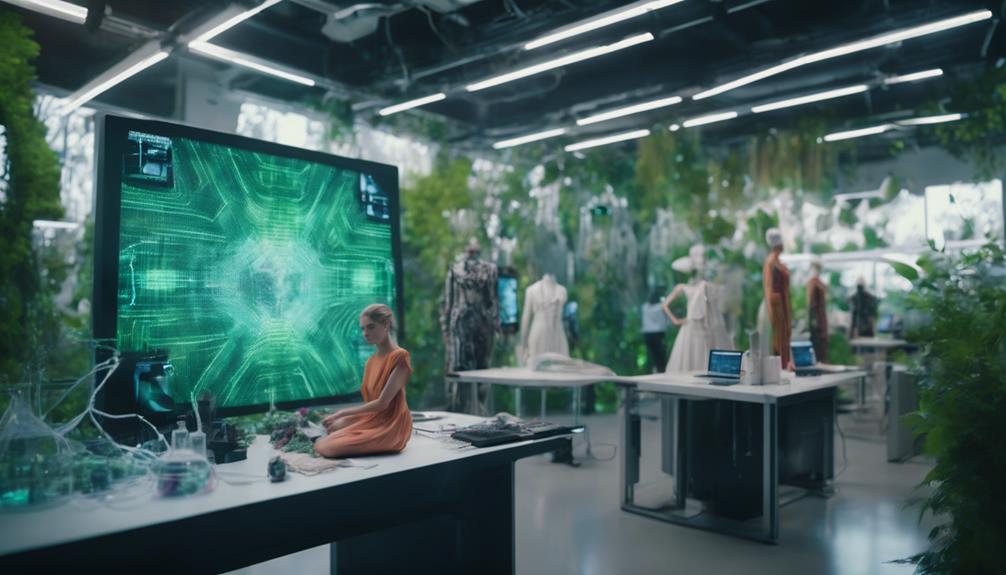
Addressing the pressing issue of waste in the fashion industry, innovations and technology are paving the way for more sustainable practices that reduce environmental impact. You'll be amazed at how brands are leveraging these advancements to enhance sustainability.
Here are some key developments:
- Sustainable Materials: Companies are exploring mycelium-based leather and plant-derived textiles, with over 102 focused on creating next-gen sustainable materials.
- Digital Platforms: Online marketplaces are facilitating second-hand sales, propelling the resale clothing market to a projected $350 billion by 2027.
- Smart Materials: Technological advancements are leading to the emergence of smart materials and sustainable production methods, further enhancing eco-friendly practices.
- Data Analytics: Brands are now utilizing data analytics to track sustainability practices, optimizing resource management and considerably reducing waste.
These innovations demonstrate a collective effort towards a more sustainable future in fashion.
As technology continues to evolve, it's exciting to see how these efforts can reshape the industry, making it more responsible and less wasteful.
Future Projections for Sustainability

Sustainable fashion is set to experience remarkable growth, with projections indicating a market increase from $8.16 billion to an impressive $33.05 billion by 2030. This surge reflects a significant shift towards sustainable clothing, as consumers increasingly prioritize eco-friendly options in their purchasing decisions.
Here's a snapshot of the future projections in sustainable fashion:
| Metric | Projection |
|---|---|
| Sustainable Fashion Market Value | $33.05 billion by 2030 |
| Ethical Fashion CAGR | 8.6% from 2027-2032 |
| Textile Recycling Market Value | $5.3 billion by 2030 |
As the ethical fashion market continues to grow, you'll notice that sustainable clothing sales are expected to exceed 6% of the overall apparel market by 2026. Additionally, circular economy models in fashion could generate $560 billion in economic opportunities, emphasizing the financial benefits of sustainability. As these projections unfold, they indicate a promising future for the integration of sustainability in the fashion industry, allowing you to make impactful choices that contribute to a healthier planet.
Frequently Asked Questions
Is the Sustainable Fashion Industry Growing?
Yes, the sustainable fashion industry is growing rapidly. You're witnessing a shift toward eco-friendly options as consumer awareness rises. Innovations in materials are boosting demand, so expect more sustainable choices in your wardrobe soon.
Is Sustainable Fashion Becoming More Popular?
Sustainable fashion's definitely becoming more popular. You're seeing more brands focus on eco-friendly practices, and consumers like you are increasingly choosing sustainable options, reflecting a strong shift towards environmental consciousness in fashion choices.
What Is the Future of Sustainable Fashion?
You might think sustainable fashion's future looks bleak, but it's actually thriving. As consumer demand rises, innovative materials and circular models are reshaping the industry, creating exciting opportunities for you and the planet.
Do People Really Care About Sustainable Fashion?
Yes, people really care about sustainable fashion. You'll find that many consumers actively seek eco-friendly options and are willing to invest more in brands that prioritize sustainability, reflecting a shift towards more responsible purchasing habits.
Conclusion
Sustainable fashion isn't just a trend; it's a movement that's changing the way we think about clothing.
You might find it surprising how quickly this industry is growing, fueled by your choices as a conscious consumer.
Every time you choose a sustainable brand, you're not just wearing something stylish; you're becoming part of a collective effort to protect our planet.
Coincidentally, your small actions today can lead to a brighter, more sustainable future for generations to come.
